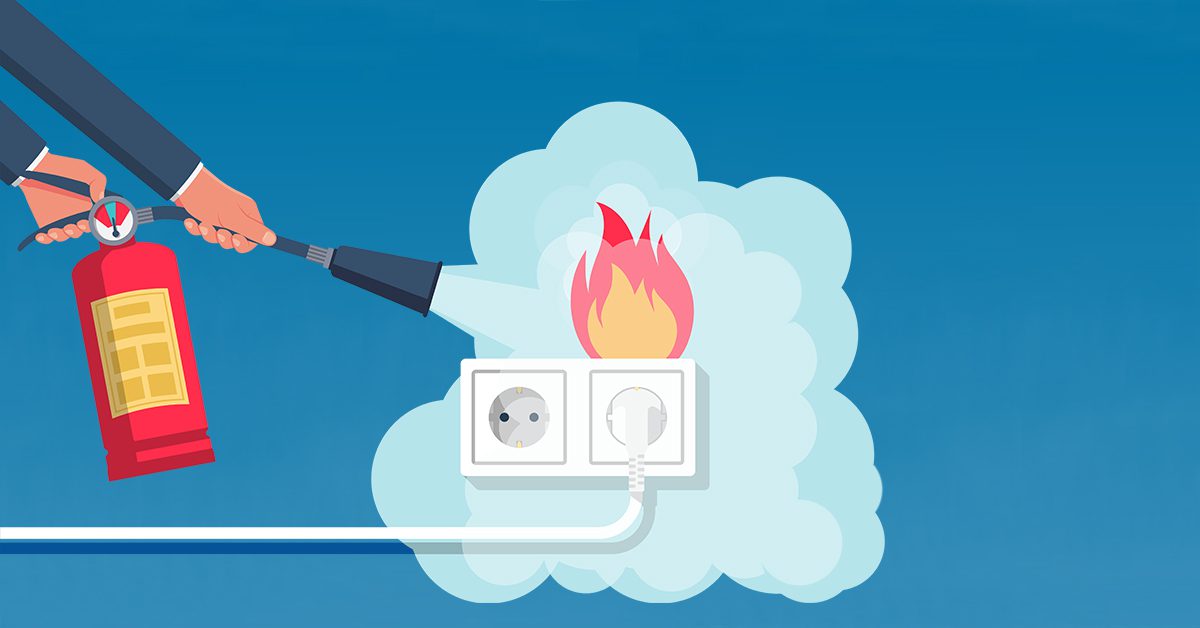
What you need to do as an employer to remain compliant
The responsibility of fire safety falls can fall upon many shoulders, from dedicated fire marshals to employers to landlords/building owners. Ultimately, as an employer, you need to ensure the property you work in is a fire-safe environment, and that sufficient procedures have been carried out, if not by yourself then by the appropriate person. Looking at a guide published by the HSE, they have outlined the following steps as mandatory.
- Carry out a fire safety risk assessment
- Keep sources of ignition and flammable substances apart
- Avoid accidental fires, e.g. make sure heaters cannot be knocked over
- Ensure good housekeeping at all times, e.g. avoid build-up of rubbish that could burn
- Consider how to detect fires and how to warn people quickly if they start, e.g. installing smoke alarms and fire alarms or bells
- Have the correct fire-fighting equipment for putting a fire out quickly
- Keep fire exits and escape routes clearly marked and unobstructed at all times
- Ensure your workers receive appropriate training on procedures they need to follow, including fire drills
- Review and update your risk assessment regularly
On top of the list created by the HSE, a few other factors you should consider include:
- Undertake regular fire alarm tests
- Have adequate fire doors installed
- Ensure appropriate signage is used
- Have designated fire safety officers and ensure everyone knows who they are
- Keep an inventory of all flammable substances
- Have regular refreshers for employees on the fire safety process, it’s easy to fall into the trap of outlining your measures once and not speaking of them again
What individual employees should remain vigilant for
Fire safety is not the sole responsibility of a few individuals, it is on everyone to ensure a safe working environment is maintained, all employees should:
- Remain vigilant for potential ignition risks and hazards
- Be mindful of keeping emergency exits clear
- Be knowledgeable of emergency fire procedures, know your closest evacuation route and fire assembly locations
- Know where items such as fire alarms and extinguishers are located
Whilst the above advice is sufficient for most sectors, some have an inherently higher fire risk than others due to the nature of their operations. In these cases, additional steps will have to be taken. For example, companies that work with flammable or explosive substances will need to implement a higher level of control to ensure the risk of a fire is as low as possible as well as abide by other safety regulations such as COSHH or DSEAR where relevant. Some tips for managing higher risk materials include:
- Safe storage of flammable liquids in process areas, workrooms, laboratories and similar working areas
- Installing ventilation systems to dilute or remove flammable gas or vapour
- Selecting equipment that will not be a source of ignition
- Implementing extraction systems to remove combustible materials such as wood dust
To conclude, most fires are preventable. Those responsible for workplaces and other buildings to which the public has access can avoid them by taking responsibility for and adopting the right behaviours and procedures. Ensuring employees are well trained and aware of risks is the best way to reduce the likelihood of a fire breaking out. Despite this, even by taking all the outlined precautions, accidents can still happen so having emergency plans and processes in place is still an essential component of managing fire safety.
Contact us for a no-obligation discussion about how AssessNET’s Fire Risk Assessment module can help you to identify fire hazards within your business.
Latest News
Riskex Limited
BizSpace
Linford Forum
18 Rockingham Drive
Milton Keynes
Buckinghamshire
MK14 6LY
What3words reference:
Contact us
Make an enquiry:
Company No. 05174302
VAT No. 844 5092 22


